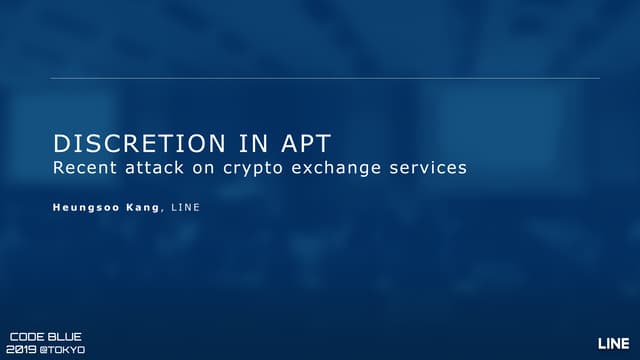Suspicious Browser Child Process
Identifies the execution of a suspicious browser child process. Adversaries may gain access to a system through a user visiting a website over the normal course of browsing. With this technique, the user's web browser is typically targeted for exploitation.
Elastic rule (View on GitHub)
1[metadata]
2creation_date = "2020/12/23"
3integration = ["endpoint"]
4maturity = "production"
5updated_date = "2024/05/21"
6
7[rule]
8author = ["Elastic"]
9description = """
10Identifies the execution of a suspicious browser child process. Adversaries may gain access to a system through a user
11visiting a website over the normal course of browsing. With this technique, the user's web browser is typically targeted
12for exploitation.
13"""
14from = "now-9m"
15index = ["logs-endpoint.events.*"]
16language = "eql"
17license = "Elastic License v2"
18name = "Suspicious Browser Child Process"
19references = [
20 "https://objective-see.com/blog/blog_0x43.html",
21 "https://fr.slideshare.net/codeblue_jp/cb19-recent-apt-attack-on-crypto-exchange-employees-by-heungsoo-kang",
22]
23risk_score = 73
24rule_id = "080bc66a-5d56-4d1f-8071-817671716db9"
25setup = """## Setup
26
27This rule requires data coming in from Elastic Defend.
28
29### Elastic Defend Integration Setup
30Elastic Defend is integrated into the Elastic Agent using Fleet. Upon configuration, the integration allows the Elastic Agent to monitor events on your host and send data to the Elastic Security app.
31
32#### Prerequisite Requirements:
33- Fleet is required for Elastic Defend.
34- To configure Fleet Server refer to the [documentation](https://www.elastic.co/guide/en/fleet/current/fleet-server.html).
35
36#### The following steps should be executed in order to add the Elastic Defend integration on a macOS System:
37- Go to the Kibana home page and click "Add integrations".
38- In the query bar, search for "Elastic Defend" and select the integration to see more details about it.
39- Click "Add Elastic Defend".
40- Configure the integration name and optionally add a description.
41- Select the type of environment you want to protect, for MacOS it is recommended to select "Traditional Endpoints".
42- Select a configuration preset. Each preset comes with different default settings for Elastic Agent, you can further customize these later by configuring the Elastic Defend integration policy. [Helper guide](https://www.elastic.co/guide/en/security/current/configure-endpoint-integration-policy.html).
43- We suggest selecting "Complete EDR (Endpoint Detection and Response)" as a configuration setting, that provides "All events; all preventions"
44- Enter a name for the agent policy in "New agent policy name". If other agent policies already exist, you can click the "Existing hosts" tab and select an existing policy instead.
45For more details on Elastic Agent configuration settings, refer to the [helper guide](https://www.elastic.co/guide/en/fleet/current/agent-policy.html).
46- Click "Save and Continue".
47- To complete the integration, select "Add Elastic Agent to your hosts" and continue to the next section to install the Elastic Agent on your hosts.
48For more details on Elastic Defend refer to the [helper guide](https://www.elastic.co/guide/en/security/current/install-endpoint.html).
49"""
50severity = "high"
51tags = [
52 "Domain: Endpoint",
53 "OS: macOS",
54 "Use Case: Threat Detection",
55 "Tactic: Initial Access",
56 "Tactic: Execution",
57 "Data Source: Elastic Defend",
58]
59timestamp_override = "event.ingested"
60type = "eql"
61
62query = '''
63process where host.os.type == "macos" and event.type in ("start", "process_started") and
64 process.parent.name : ("Google Chrome", "Google Chrome Helper*", "firefox", "Opera", "Safari", "com.apple.WebKit.WebContent", "Microsoft Edge") and
65 process.name : ("sh", "bash", "dash", "ksh", "tcsh", "zsh", "curl", "wget", "python*", "perl*", "php*", "osascript", "pwsh") and
66 process.command_line != null and
67 not process.command_line : "*/Library/Application Support/Microsoft/MAU*/Microsoft AutoUpdate.app/Contents/MacOS/msupdate*" and
68 not process.args :
69 (
70 "hw.model",
71 "IOPlatformExpertDevice",
72 "/Volumes/Google Chrome/Google Chrome.app/Contents/Frameworks/*/Resources/install.sh",
73 "/Applications/Google Chrome.app/Contents/Frameworks/Google Chrome Framework.framework/Versions/*/Helpers/Google Chrome Helper (Renderer).app/Contents/MacOS/Google Chrome Helper (Renderer)",
74 "/Applications/Firefox.app/Contents/MacOS/plugin-container.app/Contents/MacOS/plugin-container",
75 "--defaults-torrc",
76 "*Chrome.app",
77 "Framework.framework/Versions/*/Resources/keystone_promote_preflight.sh",
78 "/Users/*/Library/Application Support/Google/Chrome/recovery/*/ChromeRecovery",
79 "$DISPLAY",
80 "*GIO_LAUNCHED_DESKTOP_FILE_PID=$$*",
81 "/opt/homebrew/*",
82 "/usr/local/*brew*"
83 )
84'''
85
86
87[[rule.threat]]
88framework = "MITRE ATT&CK"
89[[rule.threat.technique]]
90id = "T1203"
91name = "Exploitation for Client Execution"
92reference = "https://attack.mitre.org/techniques/T1203/"
93
94
95[rule.threat.tactic]
96id = "TA0002"
97name = "Execution"
98reference = "https://attack.mitre.org/tactics/TA0002/"
99[[rule.threat]]
100framework = "MITRE ATT&CK"
101[[rule.threat.technique]]
102id = "T1189"
103name = "Drive-by Compromise"
104reference = "https://attack.mitre.org/techniques/T1189/"
105
106
107[rule.threat.tactic]
108id = "TA0001"
109name = "Initial Access"
110reference = "https://attack.mitre.org/tactics/TA0001/"
References
Related rules
- Apple Script Execution followed by Network Connection
- Command Execution via SolarWinds Process
- Creation of Hidden Login Item via Apple Script
- EggShell Backdoor Execution
- Execution via Electron Child Process Node.js Module

